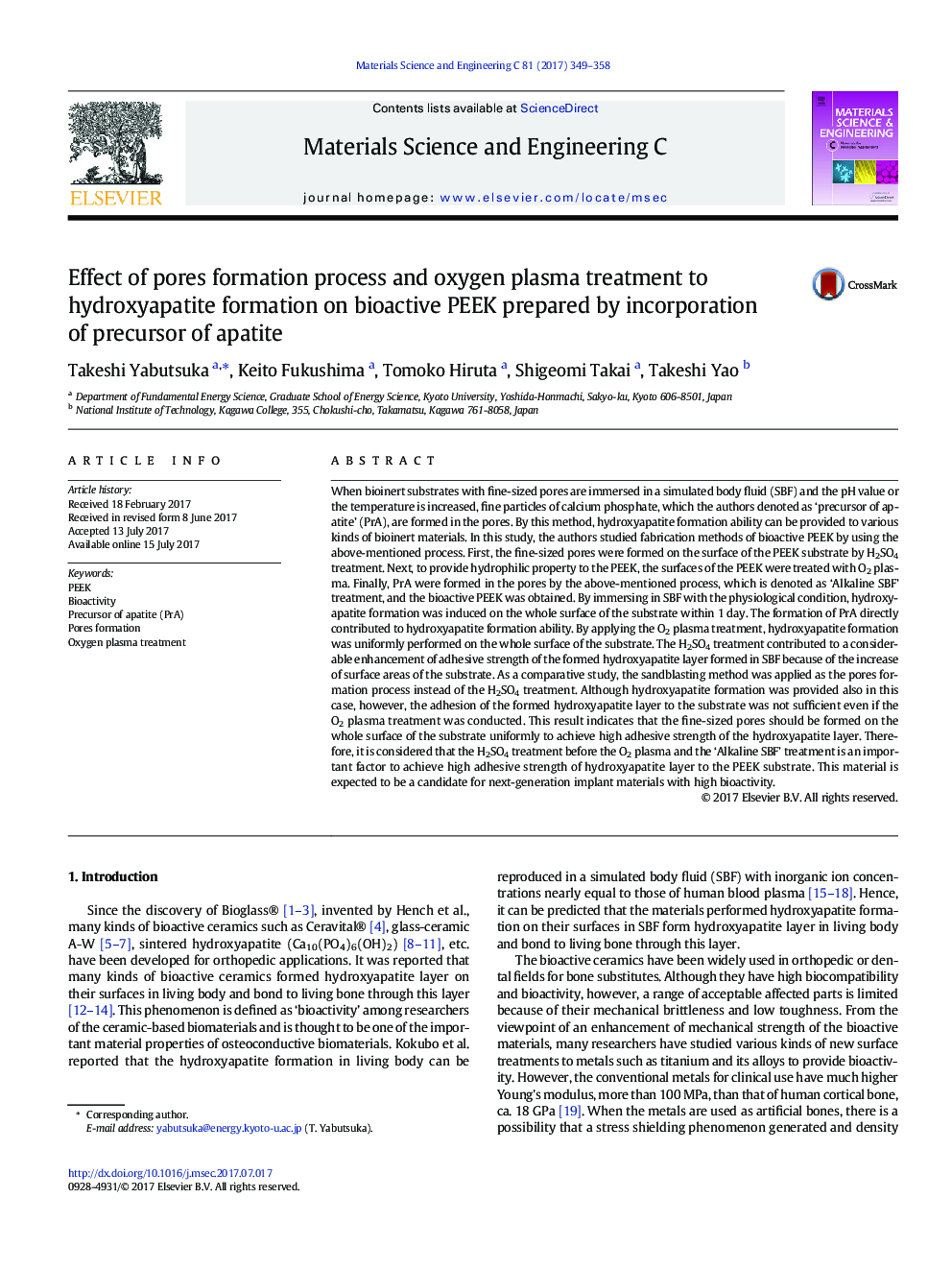| کد مقاله | کد نشریه | سال انتشار | مقاله انگلیسی | نسخه تمام متن |
|---|---|---|---|---|
| 5434246 | 1509140 | 2017 | 10 صفحه PDF | دانلود رایگان |

- PEEK was treated with H2SO4 and O2 plasma. Precursor of apatite was formed in the pores of the PEEK.
- Apatite formation was induced on thus-treated PEEK within 1 day in simulated body fluid (SBF).
- Formation of precursor of apatite was essential to provide apatite formation ability to PEEK.
- O2 plasma treatment contributed to uniform apatite formation on the whole surface of PEEK.
- H2SO4 treatment contributed to enhancement of adhesive strength of apatite layer formed in SBF.
When bioinert substrates with fine-sized pores are immersed in a simulated body fluid (SBF) and the pH value or the temperature is increased, fine particles of calcium phosphate, which the authors denoted as 'precursor of apatite' (PrA), are formed in the pores. By this method, hydroxyapatite formation ability can be provided to various kinds of bioinert materials. In this study, the authors studied fabrication methods of bioactive PEEK by using the above-mentioned process. First, the fine-sized pores were formed on the surface of the PEEK substrate by H2SO4 treatment. Next, to provide hydrophilic property to the PEEK, the surfaces of the PEEK were treated with O2 plasma. Finally, PrA were formed in the pores by the above-mentioned process, which is denoted as 'Alkaline SBF' treatment, and the bioactive PEEK was obtained. By immersing in SBF with the physiological condition, hydroxyapatite formation was induced on the whole surface of the substrate within 1Â day. The formation of PrA directly contributed to hydroxyapatite formation ability. By applying the O2 plasma treatment, hydroxyapatite formation was uniformly performed on the whole surface of the substrate. The H2SO4 treatment contributed to a considerable enhancement of adhesive strength of the formed hydroxyapatite layer formed in SBF because of the increase of surface areas of the substrate. As a comparative study, the sandblasting method was applied as the pores formation process instead of the H2SO4 treatment. Although hydroxyapatite formation was provided also in this case, however, the adhesion of the formed hydroxyapatite layer to the substrate was not sufficient even if the O2 plasma treatment was conducted. This result indicates that the fine-sized pores should be formed on the whole surface of the substrate uniformly to achieve high adhesive strength of the hydroxyapatite layer. Therefore, it is considered that the H2SO4 treatment before the O2 plasma and the 'Alkaline SBF' treatment is an important factor to achieve high adhesive strength of hydroxyapatite layer to the PEEK substrate. This material is expected to be a candidate for next-generation implant materials with high bioactivity.
Journal: Materials Science and Engineering: C - Volume 81, 1 December 2017, Pages 349-358